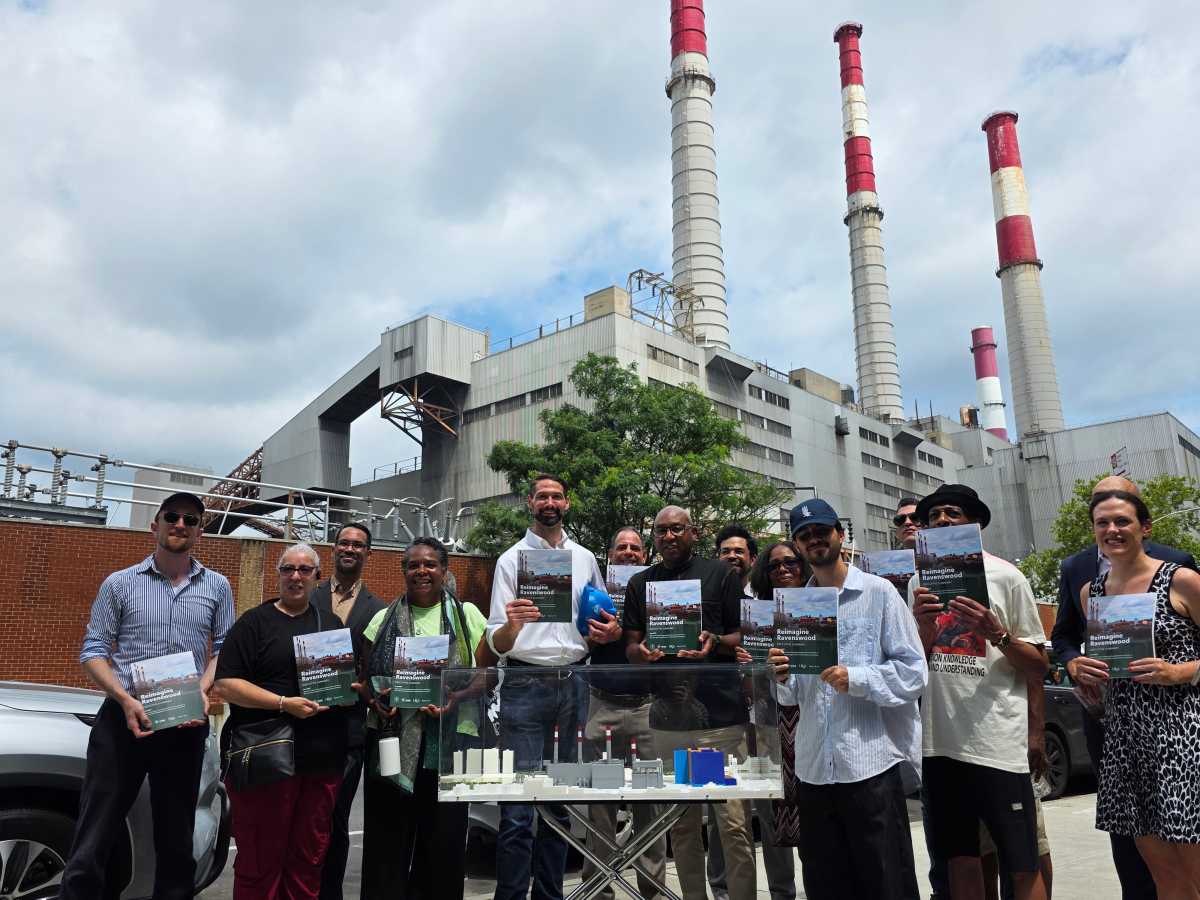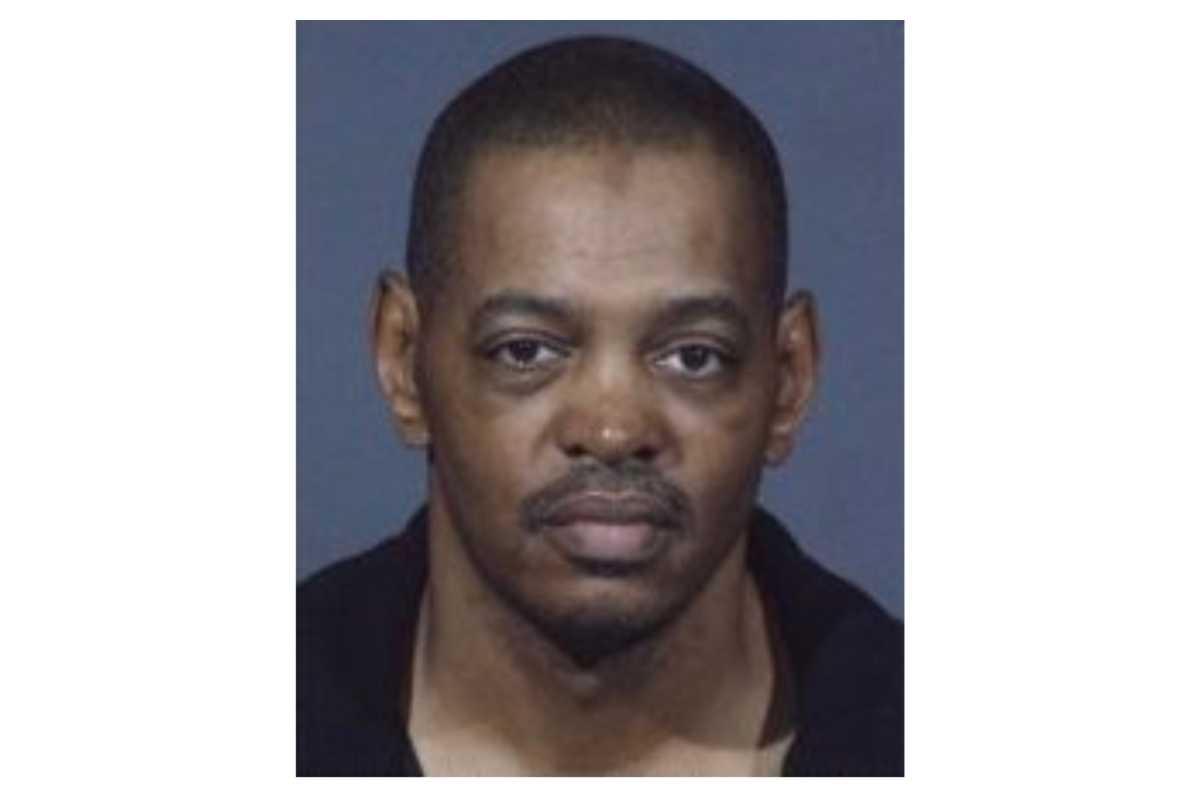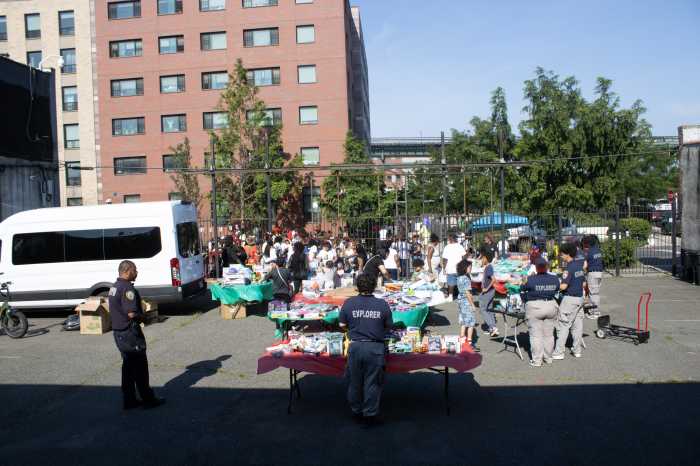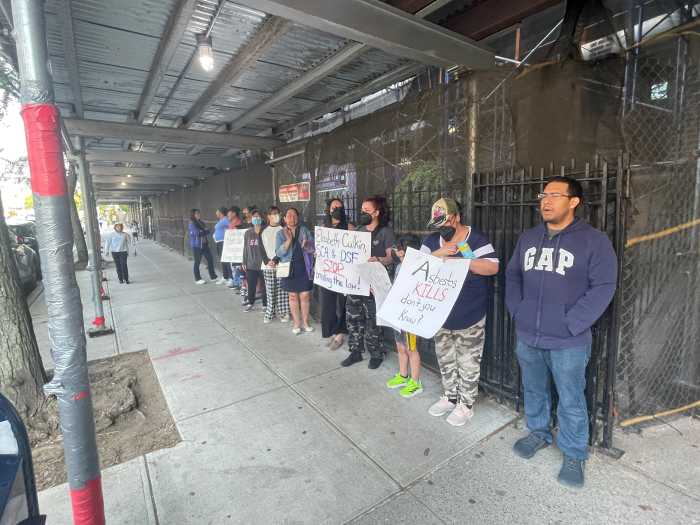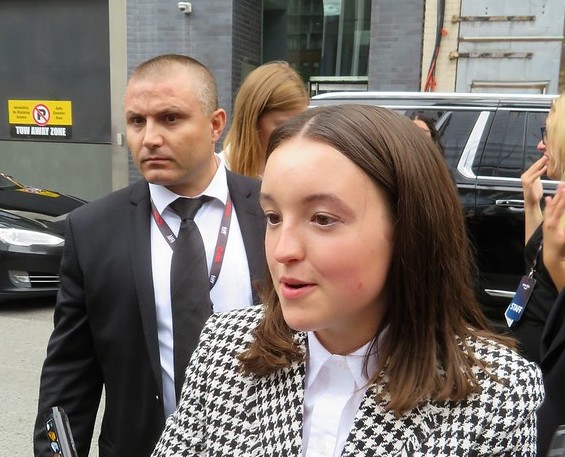BY DUSICA SUE MALESEVIC |
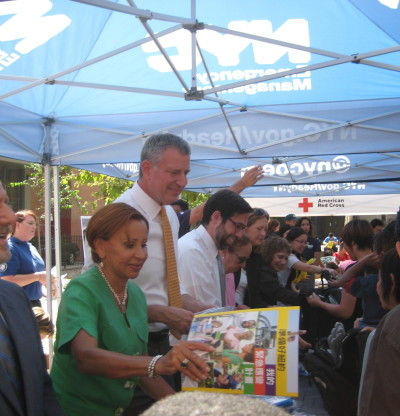
As the three-year anniversary of Superstorm Sandy approaches, Mayor Bill de Blasio announced Thursday that the city will spend $100 million to protect Lower Manhattan from major storms.
“It’s our responsibility to do the big work of resiliency in protecting whole communities — that’s why we’re investing $100 million dollars to build a system that will protect all of Lower Manhattan from flooding,” said de Blasio.
The mayor made the announcement near the Alfred E. Smith Houses in the Lower East Side after he, other elected officials and community leaders filled up black backpacks or “go bags” with essential items such as flashlights. The Smith Houses experienced flooding and was left without water and power in the aftermath of Sandy.
The system will include “protection for the Smith Houses, for so much of public housing in Lower Manhattan — residential communities all over Lower Manhattan [and] businesses — so much of what is important to this city is in Lower Manhattan,” he said. “It all has to be protected.”
The money will go toward some type of system and could implement measures such as berms, deployable floodwalls and levees. It would span from Battery Park City to the Lower East Side.
Daniel Zarrilli, director of the Mayor’s Office of Recovery and Resiliency, said the city is exploring a number of deployable systems, some of which can be installed into the ground and then activated to come up when a storm approached. Berms would be a more permanent feature, elevated land like a hill that keeps the river from getting into the neighborhoods, he said.
“We’re trying not to wall ourselves off from the waterfront, and want to make sure that we can do — continue to access the waterfront, but be able to provide that flood protection when needed,” said Zarrilli.
The city has not decided on exact locations yet, he said.
The $100 million will not be enough to protect Lower Manhattan as much as the city hopes. De Blasio said the allocation was part of a “much bigger plan for resiliency.” The city’s investment may be leveraged into more federal money. Currently, as part of the National Disaster Resilience Competition, there is $1 billion in federal money up for grabs for communities that were struck by national disasters in recent years.
In Lower Manhattan, work continues three years on to repair what Sandy destroyed and two people died in Community Board 1.
Until earlier this year, Lower Manhattan routinely lost out on money for resiliency. In March, $15 million was allocated to Manhattan’s southern tip. Before that, $1.5 million out of billions had been devoted to the area.
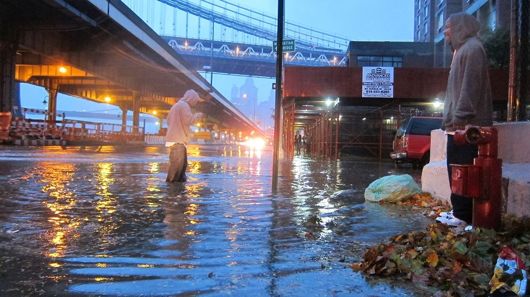
“This is terrific news,” Catherine McVay Hughes, C.B. 1 chairperson, told Downtown Express after the announcement Thursday.
Manhattan Borough President Gale Brewer said C.B. 1 “fought for this money” and that “this is very exciting.”
Last year, the city was awarded $335 million for a small portion of what was then termed the “BIG U” — protective measures that would stretch from Midtown West down around the Battery and then back up to E. 42nd St., thus creating a “U” around Manhattan.
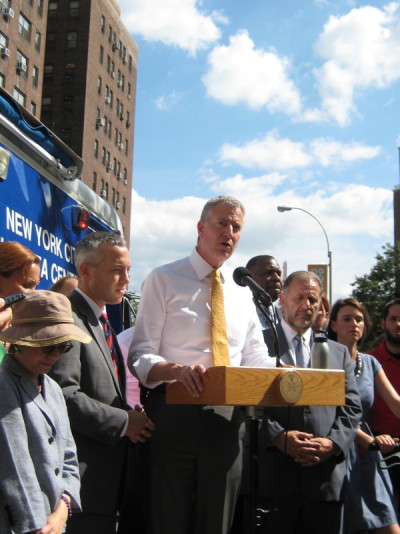
Zarrilli said the new money would be used to extend from the section that has funding —E. 23rd St. to Montgomery St. — and extending it further south from Montgomery around the tip of the Battery and up to the north end of Battery Park City.
He said it would “take several years” to put the system in place. At a C.B. 1 meeting earlier this year, an Army Corp of Engineers official said that under the most optimistic scenario, it would be about a decade before construction would begin on protections for Lower Manhattan.
Hughes said this week that “It’s important to find out more details about the timeline.”



